Wood putty is used to repair surface defects of solid wood, wood derived panelsbut also finished furniture. Although there are different types, some of which even have clear specifications on their uses, the general term is chit or wood putty. The English terms are wood filler, wood putty or wood knot adhesive. Each of them defines a particular type of putty and its field of use, but the differences are not very clearly defined, and one can often be used in place of the other. Puttying is quite an important subject for woodworkers, but also for those who have had small accidents with wooden furniture or objects in the home. So let's talk more about wood putties.
What putties are and when to use them
Putties are a mixture of resins, fillers and pigments used to repair scratches and cracks on the surface of wood, in knotson furniture. They are not used when the defect is very large because the repair becomes very visible and may do more harm than good. It is recommended that when holes in the wood, veneer tears, scratches and cracks are large, wood or veneer should be used to repair the problem. Grout, even if it is the same color as the wood, does not replicate its natural pattern and is perceived as a stain.
And in the case of repairing scratches on furniture, the recommendation is to use it for fine scratches, very inconspicuous defects. Putty putties, as they are called when used to repair furniture, cannot give the varnish hardness, touch and shine. In the case of deep scratches or large flaws, it is better to refinish partially or completely.
Putties can be used not only to repair scratches and cracks, but also to cover nail or screw holes when a dimension is wrong or reclaimed wood is used. It is useful when a drilled hole is too large and the screws too small. In these cases, putties are used which become very hard, even harder than the wood, when hardened.
They are also used to fill small voids in wood fittings (similar to the grout used for tiles). This is the case with grouts used for laying parquet flooring.
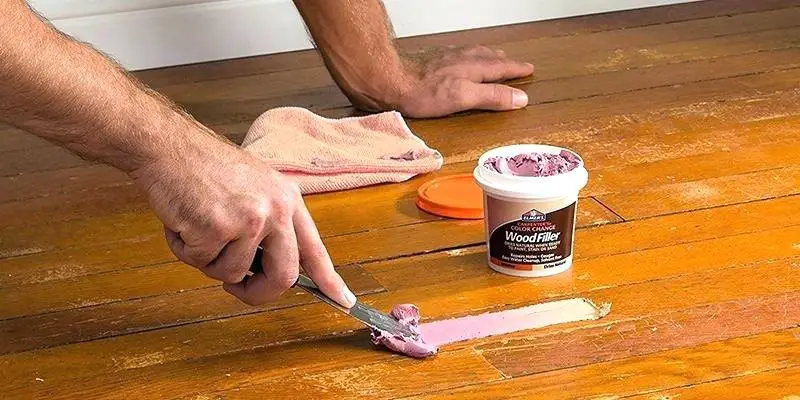
Types of putty
There are different types of wood putty, ranging from the simplest - improvisations commonly used in factories - to chemically cured or UV-cured putties. Many times putties have been "borrowed" from the automotive industry to coat wood, with very good results.
Below are some of the putties commonly used in the wood industry.
Improvisations used in factories
Anyone who has had anything to do with the wood industry can tell you about using a mixture of aracite and wood dust or nitrocellulose varnish and wood dust. Fine wood dust, not sawdust, is used in the mixture. Everyone usually has their own putty recipe from experience. A larger quantity of putty is used to cover defects, but not flush with the surface, as the putty will dry out and decrease in volume. The excess is removed by sanding.
The disadvantage of using these types of putties is that staining or incompatibilities in priming and varnishing can occur in the putty-coated areas. Solvent-based putties do not always get on well with aracite-based putties and water-based putties do not always get on well with nitro lacquers. In the case of nitro varnish, problems can arise if the varnish used for coating is polyurethane.
Those who restore furniture or other wooden objects use putties that they make from fine wood dust and shellac. These putties are compatible with the restoration materials, avoiding the use of modern products that are not very compatible with the idea of restoration.
Putties obtained from aracite or varnish may not be used for exterior wood putties.
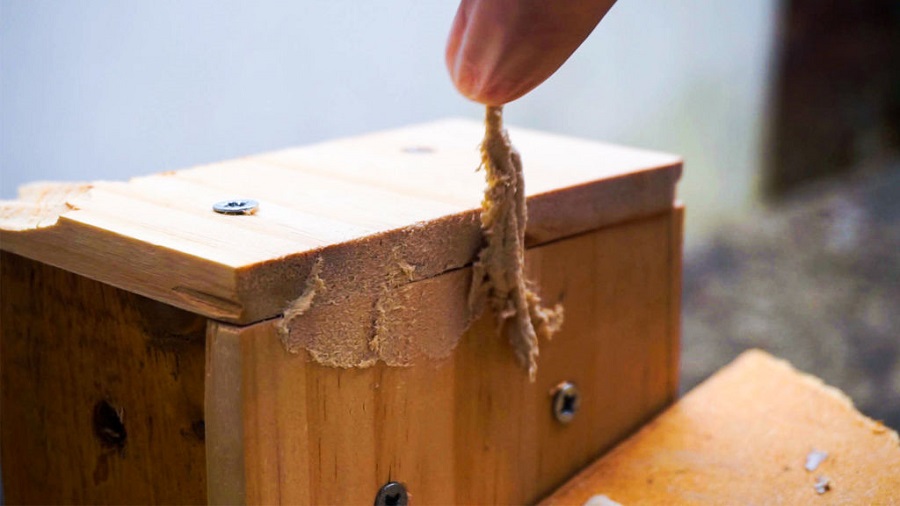
Putty
Knifing putty, also called wood putty, is most commonly used for repairing surface defects on planks, lumber, solid wood panels, veneered panels or other wood-derived panels. It is a mixture of latex and fillers, often including wood dust. It has a fairly solid consistency and is applied with a spackle or a wide-bladed knife (hence the name putty putty knife).
When small defects on a flat surface are to be repaired, the putty is applied to the entire surface, then troweled over and the excess removed immediately. It should not be allowed to dry as it is difficult to remove afterwards. Any remaining traces are wiped off with a cloth. After curing, sand the surface thoroughly to remove traces of putty, smooth it and prepare it for finishing.
Knife putty is for wood, not for repairing defects on finished surfaces. Do not use it for large defects because it will look like a big stain in the end. Knife putty can be grouted and varnished with almost any type of varnish and varnish. Incompatibilities or prohibitions are usually noted on the label, but it's good to know that it can't be used to putty objects that sit outdoors.
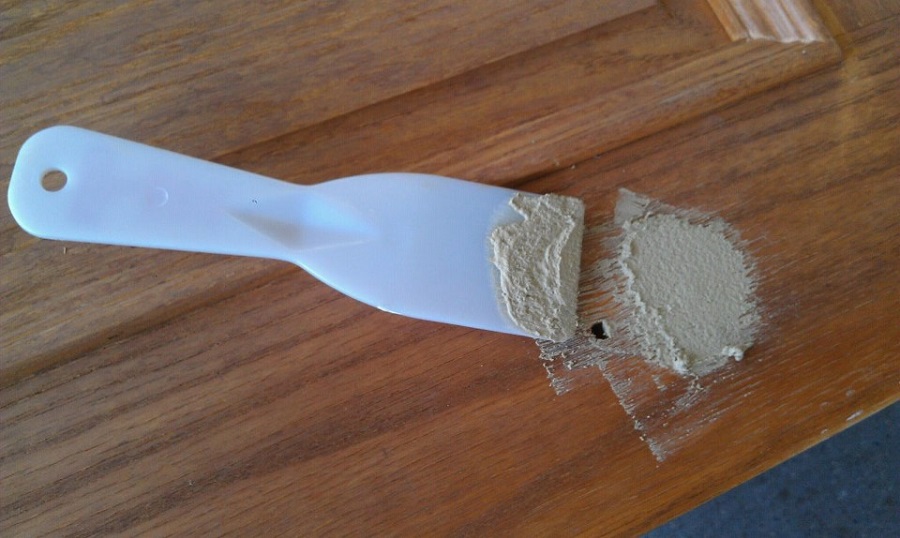
Hardening putties
Hardening putties are very hard, even harder than the wood being repaired. The most commonly used are epoxy putties. These are two-component putties, they do not dry out and are very hard. There are both industrial and DIY products that you can find in DIY stores. The latter are simpler to use and don't need special equipment. They are very hard-wearing and can be used to putty exterior wood.
I was saying that the term is quite broad and covers products with different uses. For example, putty is also called a UV-cured product used to coat the pores of large-pored wood. It's called a pore-filling putty, and it's applied using applied with valț and hardens when the panel or object passes under UV lamps. It is an industrial product that makes it possible to obtain very high quality surfaces with much lower varnish consumption.
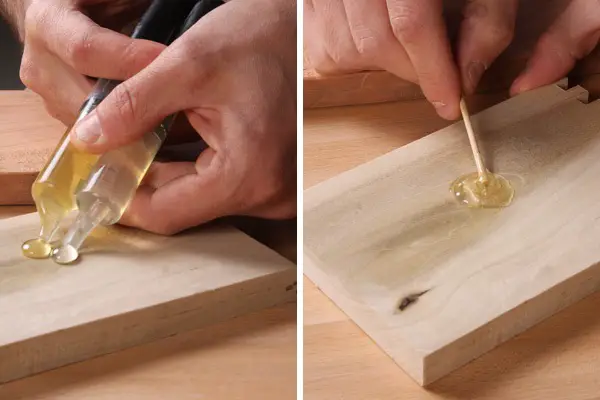
Putty for knots
One type of putty that has become very popular lately is thermoplastic putty, which can be used to repair larger knots or cracks. Putty is very similar to thermoplastic glue, in the form of different colored sticks. The colors are generally those of wood - nuc, pin, mahon, oak - but also the usual colors: yellow, black, gray.
To apply them, you need a special gun that melts the putty, a press and a special knife that removes the excess. Puttying is quite simple. First the desired color is chosen, the stick is put in the gun, and the gun brings it to a liquid state. The drops easily cover the knot or crack, getting into the most hidden places very well. It is then placed on top of the press and held for a few seconds until the putty cools, becoming solid again. At the end the excess is removed with a knife-like device similar to a ruler.
We've written about repairing cracks with such putties. In article you'll also find a video describing how it works.
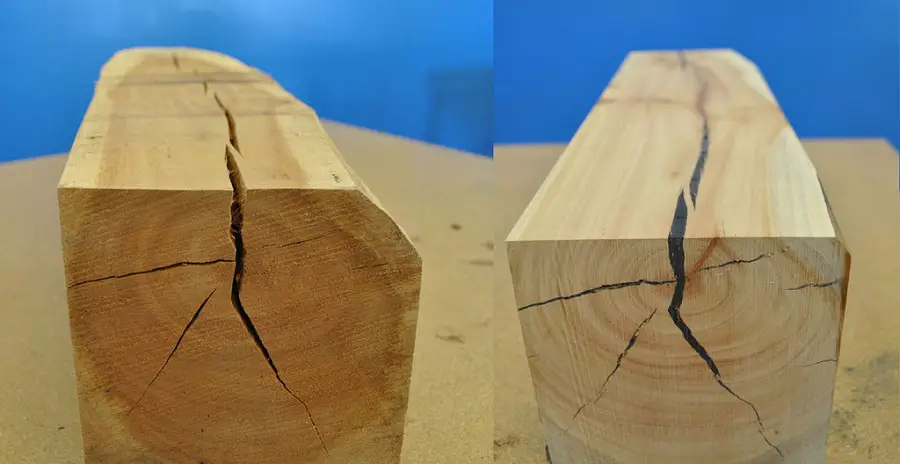
Putty putties
Touch-up putties are mixtures of waxes and oils used to repair scratches on furniture. They are solid sticks, available in a wide range of colors, and are very easy to use: the stick is pressed gently over the scratch so that the wax penetrates the crack as well as possible.
For finer scratches use touch-up pencils. Some of them have the same material as putties.
Retouch putties can be found in DIY stores, wood products stores or wood varnish and paint distributors. They are useful when a small defect can compromise the beauty of an entire piece of furniture.
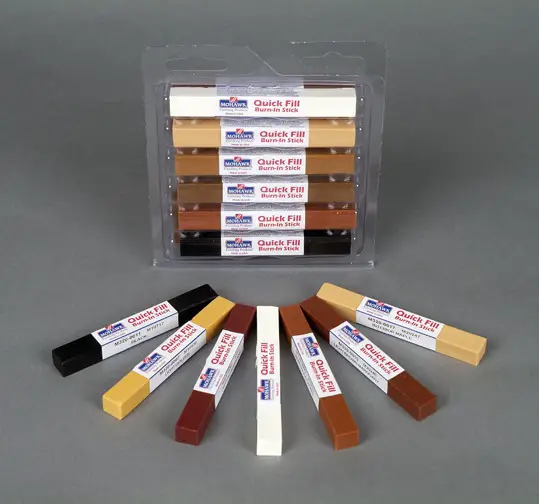
Wood is an imperfect natural material, which is why it is so beautiful. Sometimes it is the defects themselves that are why we choose a particular wood (walnut root, rosewood), a beam with cracks or a thick plank with knots. Other times, however, small defects such as scratches or cracks in the wood can be magnified during processing, and the quality of the finished product can suffer. Fortunately, many of these can be resolved with putties.
Your comments are welcome below. Share the article if you find it useful. Thanks.












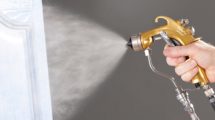



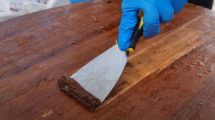

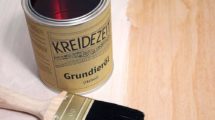












comes longá sárácia man...
wasting my time to find out:
1-name chit
2-source(city/str/signature...)
3-price RON
NOTE: 1+2+3/0=0 ... !
V.
ps:
all "chim."
For Czech fir wood is used for large cracks
Hello!
For large cracks use thermoplastic or polyester putties because they do not crack and do not shrink. The thermoplastic ones are applied with a spray gun and a press is placed on top until they cool. The excess is removed with a special knife or scraper. It is simple to use and not very expensive. The polyester one needs hardener and is applied more in factories.
All the best!
Sarut mana!!! I have a solid rosewood acoustic guitar (Gibson Songwriter Deluxe Studio EC) that has an electronic system bolted to the body of the guitar. Having some problems with the electronics, I've had to take it off the guitar a few times. By unscrewing and screwing those screws out of the guitar body several times, I damaged the screw hole and now the screws are turning loose and no longer grip the electronics tightly to the guitar wood. The wood of the guitar is a few mm thick and is an extremely expensive wood considering that it cost me about 3000 $. Due to the fact that the electronic part is not perfectly hermetically sealed to the body of the guitar, when I play certain notes, there is an annoying vibration. I figured if I filled those holes with putty, let it dry and use the original screws (I tried some thicker screws at one point...to no avail) , maybe I could solve the problem.
As a guitar that I have invested a lot in and care about, I try to find the best solution. What do you think? Would it be a good idea to use putty and if so, what putty should I use? Yesterday I arrived in Bucharest, I will stay until Friday to get rid of the backlog from college and I would like to buy something before I go back home. Preferably I would like to buy the smallest amount of putty possible, not to spend money on half a kilo for 4 holes. Thank you for the putty information, I enjoyed reading it!!! I wish you an excellent day!!!
Hello!
I think the easiest way would be to fill the holes with aracet (wood glue) mixed with wood dust (from regular woodworking, but not sawdust, because the pieces of wood are too big). Carefully put the mixture into the holes, wipe off the excess and leave to dry. Then carefully fix the screws. It is a putty used a lot in factories and the results are very good. If the hole is bigger you can put the grout on a match stick and fix it in the hole. After drying, cut the matchstick flush, grind gently and carefully so as not to damage the finish of the guitar and screw the screw into the wood of the matchstick.
Other types of putty may be harder or more plasticky and you may not get a good grip on the screws.
You can find aracet adhesive in any DIY store and it is not expensive. There are 4 types, D1...D4, depending on moisture resistance. The D3 and D4 have good water resistance and can also be used to coat wood used outdoors. The remaining glue can be used for other work if the box is kept covered with a lid. Small containers under 1 kg are also available in shops.
I hope you manage to solve the problem. Rosewood is a very special wood and it would be a shame to damage it.
Good luck!
https://revistadinlemn.ro/2016/11/23/palisandrul-lemnul-de-trandafir/
Handshake, Mrs Mihaela thank you very much for your answer. I am glad that you wrote to me very detailed and concise. I will try to implement your advice. Tomorrow I am looking for that D4 adhesive type aracite and when I get home I will put my hand on a fur, take a smilgher and produce the powder needed for the magic formula. I don't know exactly how much powder to put in the glue but I think I can manage. I hope it hardens enough to make a good grip on the screws.
PS. I was extremely glad to read your article about rosewood (I didn't know exactly what the rosewood was all about because translating the word, the name rosewood made me wonder...what stem was that rose supposed to have?:)))) ), it seems that this article was addressed specifically to me!!! And the details about Brazilian rosewood and Indian rosewood (my guitar has Indian rosewood) were very cool. It's very much loved Brazilian rosewood among guitars. Very few manufacturers use it anymore and guitars made of this wood are extremely expensive.
PS 2 Extremely beautiful, detailed and inspiring your articles. You made my day even better!!! Thank you and have a great time!!! I will keep you updated with the final result!!!
Please tell me what the result was. The mixture should be made so that it takes on the consistency of wood dust, but is still a glue, not slightly wet dust. Surely you will figure out the proportion. Wood dust can be found at any woodworking shop. A handful of wood dust will give any craftsman.
Thanks for your appreciation!
Good luck!
Hello
I read with interest the article
I have a situation and I am thinking of sharing it with you. Bearing in mind that I may need such a putty.
I accidentally burned a kitchen countertop and 5 spots were left where the material was burned. What could I use to fix the countertop 🙂 what kind of putty, or other polymer combinations? Thanks in advance
Hello!
Polyester putty or thermoplastic putty. Polyester putty is two-component, very hard when hardened and does not shrink when dry. You can also use thermoplastic putties, the ones in stick form. But you need a special gun to apply it. It is a putty that softens at high temperatures. A 'crisis' solution is wood dust mixed with aracite. Put more because it dries down. Finally, after drying, sand. Before applying grout, whichever one you choose, clean the burn well and do not leave dust in the hole.
All the best!
For holes caused by blows in the Pal can be used?
Hello!
If the chipboard does not have melamine on top or if the blow broke the melamine layer and reached the board, it can be used. Otherwise the wood grout does not have good adhesion and you should use one with hardening.
All the best!
Hello! Thank you very much for the article!
If a tabletop has been heavily attacked by decay, do you think it's a good solution to use some type of putty? (This is after cleaning it very well and giving it 3 coats of linseed oil combined with white spirit).
Hello!
And we thank you!
Holes and galleries have their own charm. If the wood has been treated against woodworm and there is no danger of woodworm reappearing, you can leave the countertop like that. However, if you want to cover them now, after oiling, you may encounter adhesion problems. Wood putty is used before finishing, when the wood is clean. You can try hardening (epoxy) putties. To increase adhesion, wait a period of time (2-3 weeks) for the surface oil to penetrate deeper into the wood and reduce the saturation of the wood.
After finishing, touch-up putties can be used. They don't have the resistance of wood putties because they are basically waxes and paraffins, but they cover the holes. Use paint putties (they don't stay transparent) and match the colour to the current one after oiling.
All the best!
Thank you very much!
I left the countertop like this after the oil layers. Even though it's not entirely smooth to the touch, the dough isn't very used, plus it looks natural. With a traditional tea towel, it will look great.
Hello,
Can you recommend a quality commercially available thermoplastic putty for outdoor use?
After reading the article I searched for this term but did not find it.
Make, model and possibly retailer would be ideal.
Thanks for your help!
Hello!
A source of thermoplastic putty found here.
All the best!
Hello,
I own some veneered straw boxes and they have slightly missing corners from dents acquired over the years.
What kind of kit to use to redo those corners?
Thank you very much!
Good evening!
If the gates without furni are small, you can use grout made of aracite and wood dust. For the same colour, if you can, dust the wood from which the veneer is made.
You can also use touch-up putties that you can find at paint and varnish shops. They are variously coloured wax sticks that look pretty good if the defect is not too big.
Yoate good ones!
Hello, I have a bathtub with wooden legs, the ones against the wall have been damaged by water, there is still half of the original thickness.What putty I could use and how?to be suitable for the humidity in the bathroom.Thank you.
Hello!
You can use epoxy putty. It is a tough, chemical hardening putty.
In my opinion, the safest way to strengthen, as a support for the case, would be to fill in the missing part with wood and glue it with polyurethane glue or to rebuild the damaged legs of the case and then finish them with moisture resistant products (oil, varnish, etc).
All the best!
Hello, I have a mask made to cover some pipes in the house made of laminated wood and I want to fill that line between the two boards with a putty or paste, sand the putty or paste and then paint the whole mask so that it seems to be one piece and not made of 3 boards as I have. Can you please tell me what putty I should use to fill that empty space between the boards?
Hello!
You need a grout that will adhere to chipboard, won't fade over time and can be coated with paint.
The most suitable would be a hardening putty, e.g. epoxy putty.
In order to obtain a continuous surface, it is very important to process the grout after curing so that the chipboard and the grouted surface are flush.
Good luck!
Thank you very much for your advice!
You're welcome!
Good evening! For the procedure of interior parquet floor (apartment rooms) which option do you recommend me to choose: cleaning with perhydrol, patching then grouting with aracite and the resulting dust, lacquering OR patching, grouting with resin/epoxy grout, lacquering? What would be the recommended procedure in terms of durability?
Hello!
By scraping off a thin sliver of wood, there is no need for perhydrol bleaching because the wood looks like new. After scraping, minor defects are covered with putty knife (wood putty) or wood dust, sanded and then varnished. You only need epoxy putty if there are major defects and there is a danger of the putty cracking.
I have put below a link that may help you.
All the best!
https://revistadinlemn.ro/2018/02/13/raschetare-parchet-etape-si-realizare-intretinerea-parchetului/
Hello.
How could I rebuild a table from furniture I had a candle on the take and it caught fire, it is a burn about a palm and a little deep.? What do you advise?
Hello!
It will be difficult to rebuild because the surface is large and the burn has gone deep. First you have to remove the burnt part. Use a chisel to remove the burn, then sand with a coarse abrasive sponge and finally with a fine sponge. You can find them at DIY stores. If the table top is made of chipboard, veneered wood or solid wood, but is dark or has a very uniform pattern without a very noticeable pattern, you can putty it with a colour grout. Use an epoxy putty, it's stronger than touch-up putty sticks.
If the table is made of veneered panel or solid wood and the burn is very high, it is better to call a specialist to (re)veneer and finish the table.
All the best!
good day
a kitchen cupboard door has come off its hinges
with what can I fill the holes from which the screws came out and then screw them back in place considering that the cabinet is made of wood chipboard with melamine pallets on top?
thank you
Hello!
You can use a mixture of aracite with fine wood sawdust. The aracite must be D3 to be resistant to steam and moisture (kitchen conditions). The mixture should have the consistency of a swirled porridge. Cover the holes tightly, allow to harden and sand to reach the level of the board. Then fit the hinge.
Good luck!
Hello,
You have some top 20 articles. Thank you!!
I'm working on converting a van into a camper. I am using alder plywood for the walls and furniture. It's light in weight and counts overall, but it's a weak material in terms of strength, dents immediately appear in it. I'm especially afraid for the furniture doors, in time, on the edges I can put cant, but for the girls what do you advise me to do, if you know a more "strong" varnish or some hard foil to glue on the plywood.
And one more question please. I bought a putty in the colour of the plywood, plywood that will be lacquered in colourless. I think the putty is acrylic, with threads in it for resistance, with which I make small repairs but especially for plugging holes where there are screws, as they look ugly, but when lacquering, with thin 2 in 1 lacquer from Kober, where I gave in places where it is more of a test, where it is grouted remains lighter in color because the plywood closes a little and becomes very visible. Can you recommend a putty that behaves like the plywood when varnishing or another method?
Thank you very much.
Hello!
Thanks for your appreciation!
The hardest varnish you can use is parquet varnish, but it won't help much if the wood is very soft. Very hard varnish is also brittle. If the backing is very soft, it will warp easily on impact and the varnish will actually break in that area, like glass, because it remains without a base, without a backing. If the varnish is more elastic, it loses its hardness and is no longer useful. My opinion is that you should veneer the veneer of your furniture doors with something more resistant: beech, oak, ash, resinous, lime. Find veneer in small quantities at Holver. Another option would be self-adhesive foil with a design that imitates wood. Not spectacular, but practical.
With grout of any type, the problem occurs when the grout area is larger and regular (round in this case). Even if it absorbs colour, the lack of wood pattern and colour uniformity will always highlight the grouted area in a clear finish. There is a kind of wood-mimicking cover for such holes, used by those who make furniture from chipboard. You can even try it with rounds cut from dowels or small twigs of wood. Or you can finish opaque, with a thin coat of paint very close to the colour of the wood used, then give it a coat of varnish. The look will be uniform, the wood will be semi-coated, so you won't lose its charm and you'll get rid of stains in the varnished areas.
Good luck!
Thank you for your prompt response.
I will choose one of the options indicated, they are feasible.
Good luck in everything you do!
Hello!
I would like to cover the holes made by the 8mm thick fastening screws in the pine wood on the outside and I am not sure what kind of putty to use. The holes are quite deep too, and I would like to paint the repairs afterwards with soap varnish for ultra hard wood with teflon.
Can you help me with some advice, please?
Hello!
For wooden holes a good choice is wood putty. It clings well to the wood, covers well and stains when painted. But because it will sit outside, use an epoxy putty, it's more durable.
In this case, I would use dowels or small dry twigs. Before putting them in the holes apply PVA glue (aracite). Use aracet D3 or D4 to be resistant to the outside. The dowel should fit tightly, there should be no play. Cut off the excess at the surface and sand with wood sandpaper (150 or 180). Then apply varnish.
Using wood the holes will not look like stains, they will look nice.
Good luck!
Thanks so much for the explanation and recommendations!
Happy Holidays!
You're welcome! Happy holidays to you too!
God help. What can I do for a crack/crack in a large wooden (paulownia and mdf) cupboard door? I attach a picture to give you an idea...
I was suggested a Polyfilla filler (for the inside) for large cracks -but I can't find it anywhere.
Thank you.
Hello!
You can use hard wax touch-up sticks. You can find them in most DIY stores and they come in various colours: walnut, oak, pine, white, black, etc. But if the crack is large, repairing it with putty will show, regardless of the nature of the putty.
You can send photos to the email address mihaela.radu@cesbrands.ro. I'll get back to you with suggestions after I see them.
Hello, can you please tell me which option is better for repairing the corner (and other areas) of a paling enclosure? The areas are both plain and painted/glued, in other words I'm interested in a good adhesion and a final hardness similar to that of the paling, the corner being more damaged. I have a choice between water-based acrylic putty and one-component putty based on wood powder and quick-drying solvent. I don't find acrylic putty hard and adhesive enough, I would lean towards the latter. What is your opinion? Thanks
Hello!
And they'd still choose solvent-based grout. Acrylic resins are a little more elastic, and if you don't get a good bond, they may pull off more easily.
Hello.
I have lime wood doors and need minor refurbishment to sills, hinge. How to proceed, what products to use?
Hello!
It depends on how affected they are. If they are not painted and the wood is "clogged", put a damp cloth on top and leave for 30 min. to an hour. The wood should recover. You can speed up the process by pressing the wet cloth with a heated iron. Then leave to dry for a day or two before painting. If there is a hole in the wood, putty it with wood putty or a mixture of wood dust and aracite, as in the article.
If the wood is painted and the paint is only slightly skipped, there are sets of hard wax touch-up putties available in DIY stores. There are sticks in several colours. Choose the right stick, rub the surface until you cover the defect, leave 1-2 hours to cure, then sand lightly with fine sandpaper.
If the paint has peeled off in more than one place, you will need to remove it completely from the sill and the affected side of the holster, then repaint. If you only paint the affected areas, it won't have adhesion and will skip again after use. Below I leave the link to articles that describe the paint removal methods at length.
Good luck!
https://revistadinlemn.ro/2021/11/10/usile-sunt-prea-colorate-cum-pot-indeparta-lacul-fara-sa-slefuiesc-si-de-ce-este-lemnul-asa-putin-vizibil-desi-a-fost-doar-lacuit/
https://revistadinlemn.ro/2022/09/08/cum-sa-cureti-cu-decapant-straturile-vechi-de-vopsea/
Good evening! What solution would I have to repair a wooden club, more specifically, to seal an area in the joint between the bottom of the club and the vertical wall? The idea is that something very waterproof is needed....
Thank you very much!
Hello!
A hardening putty, epoxy or polyurethane. Or bonded with polyurethane adhesive, also reacts in humid conditions.
Thank you very much!
I understand that the application can also be done on not perfectly dry wood?
Can you please recommend a specific brand/manufacturer?
Yes, polyurethane adhesives also bond in a wet environment.
As professional adhesives go, Tiszabond is a good brand.
I haven't worked with the ones in DIY stores. I've seen some carpenters recommend Bison. Make sure it's D4. D4 adhesives are the ones with the highest moisture resistance.
Good luck!
https://revistadinlemn.ro/2017/11/02/clasificarea-adezivilor-in-functie-de-rezistenta-la-umiditate/
https://revistadinlemn.ro/2020/06/09/de-ce-se-folosesc-adezivi-poliuretanici-pentru-lemn-structural-sau-utilizat-in-conditii-extreme/
Hello!
I have a terrace with pine poles, built 4 years ago. The wood has been stained with a thin Remmers stained lacquer. I would like to repair the cracks that have appeared on the wood. On the side that is exposed to a lot of sun and rain many smaller and larger vertical cracks have appeared. (5-7mm)
What product and procedure do you recommend for repairing and weathering wood in the future?
Hello!
I'd leave them like that. Cracks are part of the charm of wood and don't affect the strength.
If you still want to cover them, use thermoplastic exterior putties. They come in different coloured sticks (similar to wood) and are applied with a melting gun. The gun is simple, nothing complicated. The putties are resistant to moisture and low temperatures.
Good luck!
Thank you kindly for your advice and prompt response.